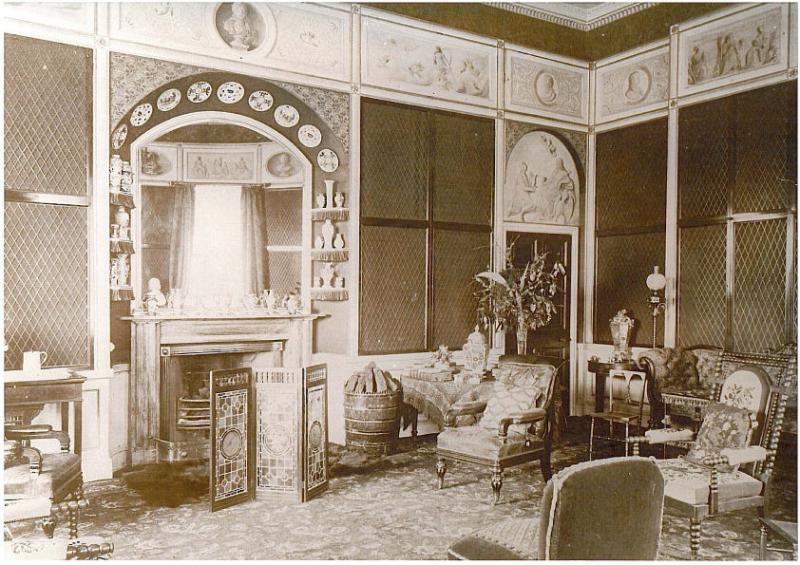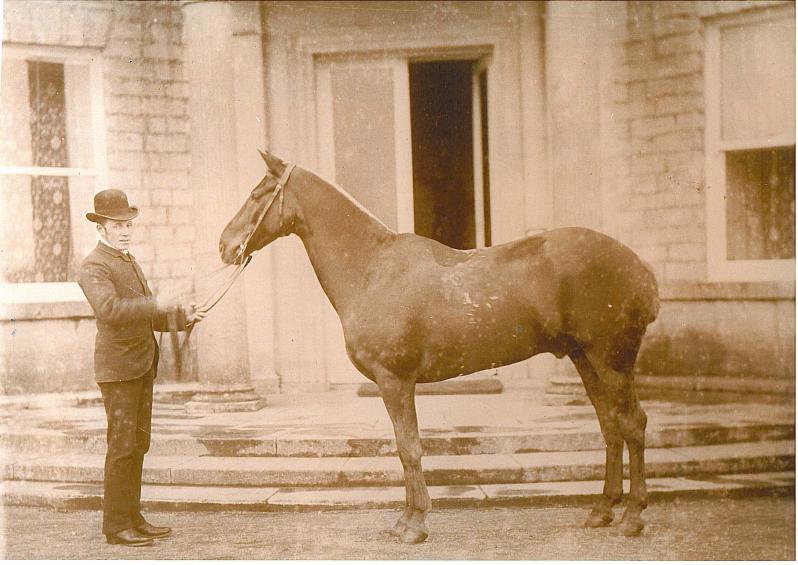The Bellews came to Ireland with the Norman Conquest and eventually a branch of the family settled in the Mountbellew area where they built a big house and established a flourishing estate. They were Catholic landlords, on good terms with their Protestant neighbours, who managed to maintain and increase their holdings by the sort of prudent balancing act employed by other Catholics as the political situation gradually improved for followers of that religion.
The family chapel on the estate was later to become the parish church. It was Sir Christopher Dillon Bellew (1763-1826),a reforming landlord of the early nineteenth century, who did much to shape the town by energetically promoting the Tuesday market to encourage good farming practice by the use of generous prizes for certain produce and to try to encourage the people to develop a surplus for selling and move away from reliance on the potato. He invited the Franciscan Brothers to the town where they founded a monastery in 1824 and opened a school for boys. He was also responsible for the final rebuilding of the house which had by now stood there since the 18th century. It was finished in the early 19th century and was a solid Georgian mansion. To judge from the records, it seems that Sir Christopher also had wide interests. A library catalogue from 1812 listed nearly 3,000 entries containing works ranging from the classics of various languages to practical manuals on farming and gardening to books on Irish history and the language. He was also interested in music and painting, buying pictures and sheet music from Dublin. Seemingly, the artists included Van Dyke, Teniers, Rembrandt and Rubens. This is known because the contents of the house were auctioned for what seem like tiny sums in 1937 when the family left the estate. Their influence, like that of other landlords, had gradually wanted and they sold the house and lands to the Irish Land Commission. Attempts were made in 1939 by a group of local people to have the house converted into a district hospital, but the Galway Board of Health refused, so the old house was torn down and the stones used to repair the roads in the parish. All that remains is a fine stone wall.
His son, Sir Michael Dillon Bellew (1796-1855), was quite prominent later on, frequently mentioned in the newspapers of the day, as a friend and supporter of Daniel O’Connell and Archbishop MacHale, two of the greatest personalities of the time. O’Connell visited Mountbellew and the archbishop was a frequent guest to the estate. Their descendant, Sir Henry Grattan Bellew, was head of the family in the early twentieth century and was as energetic as Sir Christopher had been a hundred years before him. He was seriously involved in politics and was a member of the Irish Volunteers and the National Party. He also served in the Connaught Rangers during the First World War as lieutenant colonel in Ireland. He was a great friend of Horace Plunkett and helped found the Mountbellew Co-operative Agricultural Society. Very concerned with farming, he was prominent in the development of agricultural education in the area, helping to set up and support the agricultural college, the mill and the annual show.
With the land acts of the time taking effect, the Bellews transferred land to their tenants so that by 1911 this transaction was complete. Although, of course, the political and economic situation was complicated, the family had a good reputation for many decades as humane landlords.



